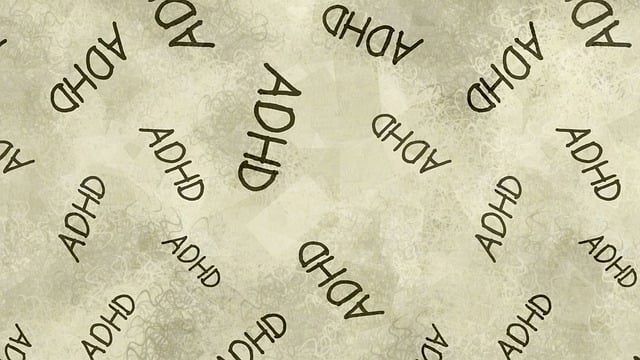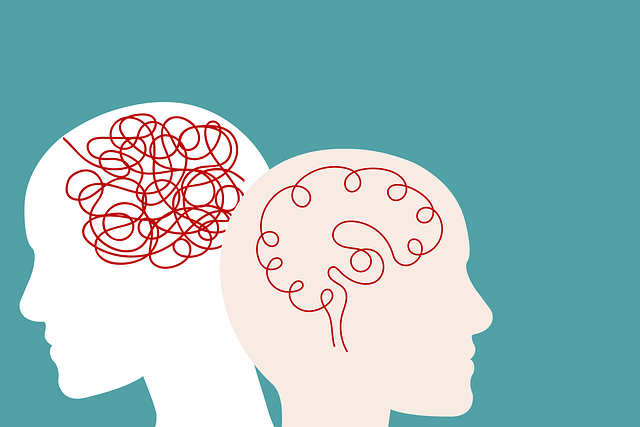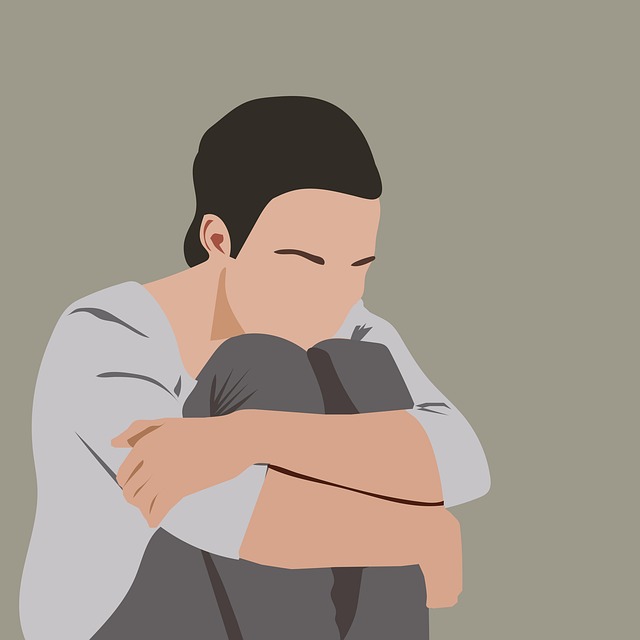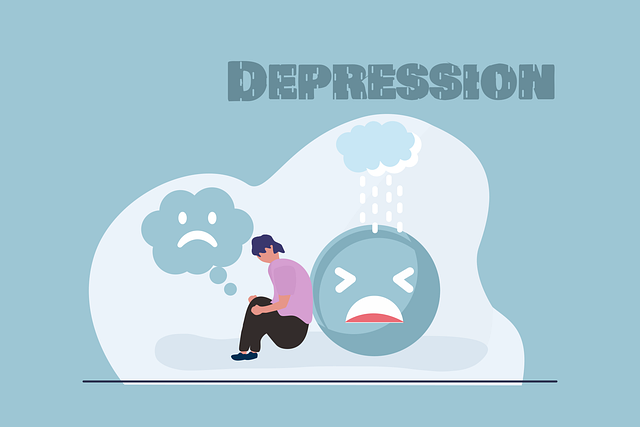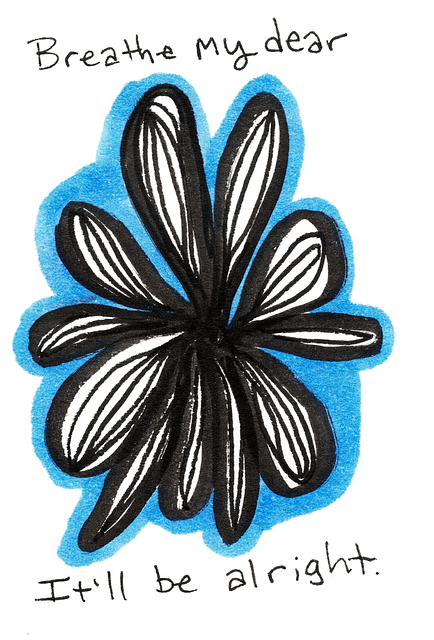The stigma around mental illness severely delays adolescent mental health support, with many teens internalizing societal beliefs and perceiving their emotional struggles as personal weaknesses. EMDR (Eye Movement Desensitization and Reprocessing) therapy, proven effective for adolescents, combines mental stimulation with memory recall to enhance resilience and improve social skills by processing traumatic memories and emotions. Breaking down stigma through educational programs, public awareness campaigns, and support groups normalizes therapy and encourages help-seeking behaviors. Structured support networks facilitated by EMDR Certified therapists provide therapeutic techniques and gateways to stress management workshops, empowering teens with practical coping strategies. Policy interventions integrating certified therapists into schools, encouraging diverse professionals, and promoting emotional intelligence training create a supportive environment where adolescents feel empowered to access evidence-based treatments like EMDR therapy for improved mental well-being.
Mental illness stigma remains a significant barrier to adolescent mental health. This article explores targeted efforts to reduce this harmful perception, focusing on EMDR therapy—a promising approach for teenage mental health. We delve into educational initiatives, support groups, policy changes, and representation, offering comprehensive insights for understanding and addressing stigma. By embracing these strategies, we can foster a more inclusive environment, empowering teens to seek the help they need, including certified EMDR therapy.
- Understanding Stigma: Its Impact on Adolescent Mental Health
- EMDR Therapy: A Promising Approach for Teenages
- Breaking Down Stigma Through Education and Awareness
- The Role of Support Groups and Peer Connections
- Policy Changes and Representation in the Mental Health Space
Understanding Stigma: Its Impact on Adolescent Mental Health

Stigma surrounding mental illness can have a profound impact on adolescent mental health, often leading to delayed access to much-needed support. Adolescents facing emotional challenges might internalize societal perceptions, believing their struggles are a personal weakness or something they should be able to “just get over.” This can result in hesitancy to seek therapy, even when it’s a powerful tool for healing and growth, such as EMDR (Eye Movement Desensitization and Reprocessing) therapy, which is increasingly recognized as an effective approach for adolescent teens.
The consequences of stigma extend beyond individual experiences, influencing the broader mental health policy landscape. Advocacy for Mental Health Policy Analysis can play a crucial role in dismantling these barriers by raising awareness, promoting understanding, and encouraging early intervention. By addressing stigma, we not only support adolescents in their journey towards emotional regulation and intelligence but also contribute to shaping a more inclusive and supportive societal response to mental illness.
EMDR Therapy: A Promising Approach for Teenages

EMDR Therapy has emerged as a promising approach for adolescent teens struggling with mental illness. This innovative treatment method focuses on helping individuals process traumatic memories and emotions, facilitating emotional healing processes. By tapping into the client’s thoughts and feelings while they simultaneously focus on specific sensory inputs, EMDR Certified therapists enable teenagers to work through deep-seated issues that may be hindering their ability to cope effectively.
Through this unique combination of mental stimulation and recall, EMDR has been shown to enhance resilience building and improve social skills training in teens. The therapy encourages participants to gain new perspectives on distressing events, reducing the intensity of associated negative emotions. As a result, adolescent teens can begin to heal from past traumas, leading to improved overall mental well-being.
Breaking Down Stigma Through Education and Awareness

Stigma around mental illness can be a significant barrier to teens seeking help for their emotional and psychological struggles. One effective way to break down this stigma is through education and awareness initiatives. By integrating programs that teach about mental health into school curricula, we can ensure that young people understand that seeking therapy is as normal and essential as attending physical health check-ups. This shift in perspective empowers teens to open up about their experiences and encourages them to explore treatment options like EMDR therapy, which has shown remarkable effectiveness in treating trauma and anxiety disorders.
Public Awareness Campaigns Development and Cultural Sensitivity in Mental Healthcare Practice play a crucial role in this process. Through engaging communication strategies, we can dispel myths and showcase the benefits of seeking professional help. These campaigns should be designed with cultural sensitivity to ensure that messages resonate with diverse audiences. For instance, incorporating stories from individuals who have successfully navigated mental health challenges can inspire hope and reduce the fear often associated with seeking therapy. By combining education, awareness, and inclusive practices, we can create a more supportive environment for teens struggling with their mental health, ultimately encouraging them to pursue treatments like EMDR Certified therapy when needed.
The Role of Support Groups and Peer Connections

Support groups and peer connections play a pivotal role in stigma reduction efforts for mental illness, especially among adolescent teens. These platforms offer a safe space where individuals can share their experiences, gain understanding, and foster solidarity. Peer support enhances coping skills development by normalizing feelings and challenges that many adolescents face, thereby encouraging help-seeking behaviors. Members learn from each other’s journeys, cultivating emotional intelligence and enhancing their ability to manage stress effectively.
Organized groups, such as those facilitated by EMDR Certified therapists, provide structured environments for emotional exploration and healing. Therapy sessions often incorporate techniques like mindfulness exercises and cognitive reframing, empowering teens with tools to navigate their mental health challenges. Moreover, these support networks can serve as launching pads for participation in stress management workshops, further equipping individuals with practical coping strategies to thrive in a society that continues to de-stigmatize mental illness.
Policy Changes and Representation in the Mental Health Space

Policy changes play a pivotal role in reducing the stigma surrounding mental illness, especially when focusing on adolescent and teen populations. Initiatives that promote open dialogue about mental health within educational institutions can help destigmatize seeking therapy. For instance, integrating EMDR (Eye Movement Desensitization and Reprocessing) certified therapists into school settings offers a specialized form of therapy for teens struggling with trauma or depression. Such policies ensure accessibility to evidence-based treatments, fostering an environment where young individuals feel empowered to prioritize their emotional well-being without fear of judgment.
The mental health space also benefits from diverse representation, reflecting the communities it serves. Encouraging and supporting professionals who have personal experiences with mental illness, such as depression prevention specialists or burnout prevention strategies for healthcare providers, can significantly impact patient care. This approach enhances empathy, understanding, and trust between clinicians and clients, potentially leading to improved treatment outcomes. Additionally, incorporating emotional intelligence training in professional development programs equips practitioners with the skills to create safe, supportive environments, further contributing to stigma reduction efforts.
Mental illness stigma remains a significant barrier to adolescent mental health treatment. However, through comprehensive approaches like EMDR therapy, education and awareness initiatives, support groups, and policy changes that promote representation, we can create a more inclusive environment. By empowering teens with understanding and access to effective treatments, such as EMDR certified therapists, we move towards a future where adolescents receive the care they need without fear of stigma.
